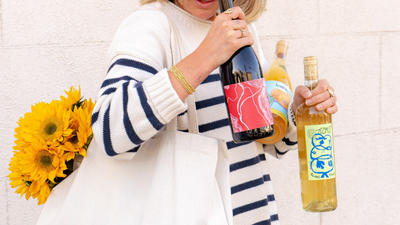GREECE
“These summer nights are short. Going to bed before midnight is unthinkable and talk, wine, moonlight and the warm air are often in league to defer it one, two or three hours more.... The afternoon is the time for real sleep: into the abyss one goes to emerge when the colours begin to revive and the world to breathe again about five o'clock, ready once more for the rigours and pleasures of late afternoon, the evening, and the night.” -
Patrick Leigh Fermor “Mani: Travels in the South Peloponnese” (1958)
Greece’s greatest hits remain the golden oldies, which is understandable. When a single ancient civilization can plausibly claim credit for (amongst other things) direct democracy, Aristotlean unities, Euclidean geometry, Platonic philosophy, cartography, the Olympics, the original pantheon of messy deities who crave drama, the term “pantheon” itself - along with so many other concepts and categories with which we mediate the outside world - well, its probably fair said ancient civilization gets top billing for a few thousand years or so.
As such wine and/or modernity may not be the first things that come to mind when it comes to Greece. But it boasts a viticultural history as old as any place, aside from maybe Georgia and Armenia, and along with everything else, the original denizens may have invented wine culture. They were certainly among the earliest populations to incorporate wine into the everyday, expanding its use beyond traditional, sacramental functions. As the various city-states coalesced, citizens cultivated their own vineyard plots and shared and exchanged the results. The word “symposium,” now associated with academic conferences, literally means “drinking with others,” and was a favorite pastime of old Grecian high society. When they colonized other places, the wines and seeds came with them, to Sicily, southern France and Spain. Greek wine was especially popular and prized in Italy during the Roman Empire.
So what happened? Basically between then and now, the fickle vicissitudes of history - Ottoman Empire, war, occupation and dictatorship, etc. - conspired to shrink Greek wine’s profile back to domestic dimensions, i.e. cheap bulk wine produced exclusively for local consumption. But as legendary travel writer (and Grecian resident for much of his adult life), Paddy Leigh Fermore describes above, wine remained an essential instrument in the rhythms of daily life throughout. By the time it finally got bottled in glass and slotted into an official appellation system (1960-70s), conditions were in retrospect ripe for the renaissance we are enjoying now.
Today, there are some 300 indigenous varietals, many of them very old, growing across remarkably diverse terroir, from arid Mediterranean islands to wet, mountainous pine forests that see snow come winter. They are bundled into 4 major wines zones: Northern, Central and Southern Greece, plus the Aegean Islands. Our first stop is Northern Greece, which stretches across roughly the top third of the mainland. This zone receives some climatic influences from the Mediterranean, but is generally more continental, with colder winters, high winds, rain, and snowfall in the mountains. It is the home of Xinomavro (“ke-see-no-mav-roh”) possibly Greece’s most important red grape, sometimes called “The Barolo of Greece” as it is perhaps the only varietal in the world that recalls Nebbiolo, the source material for Piedmont’s finest. Our example is from Naoussa in central Macedonia, which is arguably Xinomavro’s ideal habitat.
Moving through Central Greece, which occupies the eastern side of Pindus and Agrafa mountains and includes Athens at its southernmost point, we arrive in Southern Greece, consisting of the Peloponnese part of the peninsula, and the island of Crete. It has a hot Mediterranean climate, and is mostly known for aromatic white wine, the exception being Agiorgitiko (Ah-your-yeek-tee-ko), a red grape celebrated for producing wine comparable to Merlot, lush and fruity, but with more spice. As you might imagine, it blends well with Bordeaux varietals, and our example here features 20% Cabernet Sauvignon.
Our final selection comes from Crete, the largest and most populous of the Greek islands, and the fifth largest island in the Mediterranean Sea. The oldest wine press in the world, dating back to 2500 B.C.E. was discovered here, in the ruins of the village of Vathypetro. Kotsifali is the primary indigenous red varietal grown on the island; our bottling is produced by its first certified organic winery, using an ancestral method wherein 30% of the grapes are left on the vine to ripen further, before being blended with the rest.
The last zone, the Aegean Islands, likely hews most closely to the Greek vacations of our imagination: white-washed houses backdropped by azure waters, lots of fresh seafood, and briny, mineral-driven whites to accompany it. This being Red Rogues, our interest is the deeper hues, though you should definitely sample some Greek whites if so inclined, as well as any additional reds and roses you come across. These bottles are a great start, but we are encountering new, never-before-exported varietals - Dafni and Liatiko for instance - regularly in the shop these days.. There has never been a better time to try out these unfamiliar syllables and distinctive flavor profiles; they won’t stay so obscure and affordable for long.
Cheers!
The PlumpJack Wine Team
|
2018 George Skouras Megas Oenos |
|
|
Region / Country of Origin: Peloponnese, Greece |
About the winemaker: George Skouras was born in Argos, one of the most ancient towns in Europe with more than 3,000 years of wine making culture and tradition. Starting in 1980, he studied Agriculture at the University of Dijon, in Burgundy, France. Upon graduating with a degree in oenology, he started gathering experience in many classic wine producing regions of France and Greece, before realizing a long held vision with the creation of Domaine Skouras in 1986. Initially the small wine-making facility was in Pyrgela, a small village on the outskirts of Argos, the next logical step was the creation of a boutique winery in Nemea PDO, at the village of Gimno. Winemaking Notes: The vineyards are located in the Nemea region of Peloponnese. Vines are planted at high elevation on rocky soils for both Agiorgitiko and Cabernet Sauvignon. Vines are stressed and dry farmed so the root systems reach deep into the soils to find nutrients. Alcoholic fermentation and extraction in stainless steel vats at 23˚C. Post fermentation extraction at 20˚C. Total extraction time: Agiorgitiko: 17 days. Cabernet Sauvignon: 15 days. Full malolactic fermentation in barriques. Maturation in new French barriques for 18 months, 4 of which in the presence of light lees. The wine is matured in bottle for a further 6 months in the cellar. Tasting Notes: 80% Agiorgitiko + 20% Cabernet Sauvignon. Intense deep garnet color with violet highlights. The nose has depth, concentration, complexity, but also finesse. Aromas of red and black fruits such as raspberry, cherry, blueberry and blackberry along with spices, tobacco and leather notes. On the palate it is silky but robust with gentle tannins and balanced acidity, the aromas of red and black fruits, cloves, black pepper and a touch of herbs stand out. Long aftertaste with great complexity. |
|
Winemaker: George Skouras |
|
|
Price per bottle / Price per case: $41 btl/$442.80 |
|
|
Suggested Food Pairing: Gemista (Greek stuffed tomatoes) Stifado (Greek stew) Spanakopita Chicken Biryani |
|
|
2019 Diamantakos Xinomavro |
|
|
Region / Country of Origin: Naoussa, Greece |
About the winery: In 1968, ruins were found on Diamantakos’s land, which later proved to be Aristotle’s school where Alexander the Great was taught. The government compensated the family for the land and they bought what now is the Diamantakos 'Ktima' vineyards and winery. The vineyards consist of two indigenous Greek grape varietals, Xinomavro and Preknadi. This pocket-sized estate is now in its third generation, but has only sold its own label for fifteen years. About the winemaker: George Diamantakos is a third generation winemaker. His grandfather and father planted the grapes in the 80s, and began making their own wine in the 90s. George grew up working the vineyards with them and went off to study oenology, where his passion for winemaking began. He took over when he returned in 2005, and continues his artistry through cultivating, learning and perfecting with each harvest. Tasting Notes: Xinomavro reveals all the depth and complexity of Naoussa’s terroir. On the nose you’ll find a concentration and freshness, with typical aromas and flavors reminiscent of small red fruits, combined with floral notes and sweet spices from the oak. The bright acidity and the refined tannins build the structure of the wine, which is accessible and enjoyable in it’s youth. At the same time, it has extraordinary potential to evolve over the years in the bottle, unfolding all of it’s virtues and enhancing your pleasure at the dinner table. “Plum and cherry aromas follow through to a medium body, with open tannins and a mineral, iron, and light clove aftertaste with the fruit.” 92 Points James Suckling |
|
Winemakers: George Diamantakos |
|
|
Price per bottle / Price per case: $38 btl/ $410.40 case |
|
|
Suggested Food Pairing: Roasted lamb Coq au vin Wild mushroom risotto with parmesan shavings Aged Gouda |
|
|
2021 Paterianakis 3.14 Kotsifali |
|
|
Region / Country of Origin: Crete, Greece |
About the Winery: Ancestors of the Paterianakis family used to cultivate grapes and sell them to the nearby vinification factories in Melesses. When Giorgios Pateriankais established the winery in 1990, it was the first certified organic estate in Crete. With its 4000 year-old wine culture, this magnificent island offers no shortage of unique indigenous grape varieties, which is the focus here. Over the years, the Paterianakis family has preserved all the native grape varieties, including the rare ones, and gradually added more. Some of the carefully selected vines are Vidiano, Thrapsathiri, Moschato Spinas, Sauvignon Blanc, Assyrtiko, Kotsifali, Mandilari, and Syrah. The company follows biodynamic practices in the vineyards with respect to biodiversity. Now and then, the winery adds a new family of natural wines and organic spirits to its collection. Today, Emmanouela Paterianaki runs the family winery, accompanied by her sisters, Niky and Georgia. She joined the business in 2001 after studying oenology at the University of Athens. About the Winemaking: For her red “Pi” wine, Emmnuela had the inspired idea to leave 30% of the grapes on the vine until very ripe, at which point they were blended with the rest. The result is a hugely-coloured, unsulphured and unfiltered wine that smells uncannily like really top Chinon but is elegant and lithe on the palate, with a resurgent saltiness in the tail. Not the least remarkable feature of the wine is its 12% alcohol level. 100% Kotsifali. Tasting Notes:. 3.14 comes loaded with concentrated aromas of ripe fruits, ripe cherries, and earthly Cretan herbal tones that dominate the nose. On the palate, the silky texture, soaring acid, and laid-back tannins make 3.14 a pleasant natural wine which is best served at cellar temperature. |
|
Winemaker: Emmanouela Paterianaki |
|
|
Price per bottle / Price per case: $39 btl / $421.20 case |
|
|
Suggested Food Pairing: Roasts Meat Pies (Kreatopita) Pasta with Mizithra Cheese Yellow Cheese |
|



